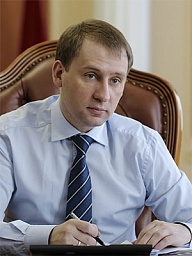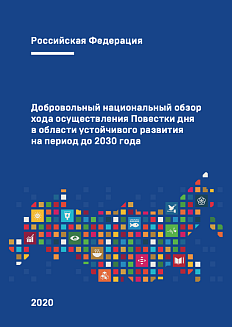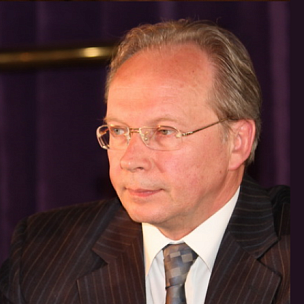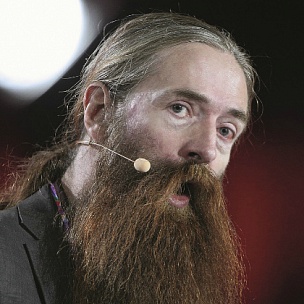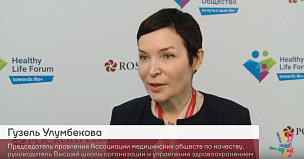A new stage in the development of the Russian Far East has begun, the process is picking up speed. Weve created a new legal framework. 42 federal laws and 191 decisions of the government of the Russian Federation have been passed. Namely, right at the end of July, the President of the Russian Federation signed a law allowing ASEZs to extend into offshore areas. This expands the opportunities available for doing business in the Russian Far East.
In large part thanks to the new, modern legal framework, the growth rate of the manufacturing industry in the macro- region is three times above that of the Russian national average, the Russian Far East has received a third of all foreign direct investments made in Russia in the past few years. Today, the region is literally open for investors. Citizens of 19 countries can obtain a visa for free, taking advantage of a simplified regime. Since August 2017, over 86,000 foreigners have visited the Russian Far East using an electronic visa.
Overall, the region is home to 1,700 investment projects at varying stages of implementation, 237 new enterprises that are already in operation, and 37,000 new jobs. And these figures are changing every day.
The FEFD is currently home to some of the largest construction projects in the country. In Amur Region, it is a gas processing plant with a projected capacity of 42 billion cubic metres of gas per year. In Primorye Territory, it is the Zvezda Shipyard, which will be building large- tonnage ice-class vessels.
Yakutia has got GOK Denisovskiy and GOK Inaglinskaya. Peschanka, a large gold and copper ore deposit in the Baimskaya ore zone, is undergoing development in Chukotka.
All this was made possible thanks to our unique preferential regimes: the Advanced Special Economic Zones, the Free Port of Vladivostok, and infrastructural and administrative support. Businessmen have now seen the Russian Far East and understand that it is conduciveto implementing major projects.
How much of this can be attributed to the work of the new team?
There is no point dividing anything or drawing any lines. We carry on developing the Russian Far East. The president of the Russian Federation did not set a short-term objective, there is much that needs to be done in the region. The Ministry for the Development of the Russian Far East, under the leadership of my predecessor Alexander Galushka, made enormous progress, their efforts can be compared to those of pioneers.
Nevertheless, I would like to mention one thing. We have successfully addressed the situation of Far Easterners access to subsidized airplane tickets. We stepped in right at the moment when those special fares ran out in just two weeks. Why did that happen? Because funding had been cut three years in a row, but we were able to turn the situation around. In 2019, twice as much funding from the federal budget was allocated towards subsidizing major air flights in the Russian Far East as it was in 2018. Thats RUB 8.2 billion. That will allow for the transport of over 1 million passengers! (Compared to 600,000 last year.) And, whats very important, is that the programme now operates the entire year and has been expanded to include 134 routes.
I also want to say a few words about the implementation of the programme for the social provision of new centres of economic growth, or Unified Subsidy. The active phase of this project started right when I became minister. Essentially, the programme aims to help Far Eastern Regions with issues that theyre having trouble tackling alone.
For example, in the town of Svobodny in Amur Region, where Russias largest gas processing plant is currently being constructed, there is a huge clean water problem. Thats why funding from the federal budget, as part of the Unified Subsidy programme, has been allocated towards the construction of a water supply and utilities system. Primorye Territory has the highest share of depreciated medical equipment, so federal funding is being directed towards modernizing the technology used in hospitals and clinics. In Buryatia, in Ulan-Ude, the last purchase of tramcars happened in 1996, so were planning to purchase 15 trams in one go. In the settlement of Chegdomyn in Khabarovsk Territory, people have been waiting for years for the construction of a swimming pool to be completed. And now, thanks to Unified Subsidy, the pool opened in March 2019.
Never before have our regions received this much federal funding for the construction and renovation of social facilities. You know, just five years ago, under the government programme titled The Socioeconomic Development of the Russian Far East and Baikal Region, with the exclusion of transport projects, spending on social facilities totalled 0 roubles and 0 kopeks. Today, the three- year budget (20192021) is over RUB 184 billion! The Russian Far East has never gotten this kind of funding before.
The key objective is making sure that the quality of life in the Russian Far East is growing at a rate that is higher than the national average. This is the only way that we can catch up with Russias central regions. People are expecting to see results

The Primorsky Aquarium on Russky Island opened in 2016
In late 2018, the Republic of Buryatia and Zabaikalye Territory became part of the Far Eastern Federal District. How is the integration of these regions going?
Clearly, were talking not about geographic changes, but of the attribution of Far Eastern preferential regimes: Advanced Special Economic Zones and the Free Port of Vladivostok. The opportunity to receive land at no cost through the Far Eastern Hectare programme; the construction and modernization of social infrastructure, which is also catastrophically lacking in these regions.
In my opinion, the process of integrating Zabaikalye Territory and the Republic of Buryatia into the Far Eastern Federal District is going smoothly. The Buryatia and Zabaikal ASEZs have been created. The two regions will receive RUB 16.14 billion from the federal budget by 2022 for the construction, major renovation, and modernization of social infrastructure: schools, nursery schools, hospitals, roads. Some of the construction is already slated to begin this year.
On 1 August, the Far Eastern Hectare programme officially expanded to include Zabaikalye Territory and the Republic of Buryatia. Initially, land parcels will only be available to residents of these regions. Then, starting on 1 February 2020, they will become available to all Far Easterners, and by 1 August 2020, they will become available to all Russians.
During EEF 2019, a lot of attention will be paid to social issues, to improving the quality of life in the Russian Far East. National projects have been created to this end. Have they taken into account all of the needs of Far Eastern regions?
The key objective is making sure that the quality of life in the Russian Far East is growing at a rate that is higher than the national average. This is the only way that we can catch up with Russias central regions. People are expecting to see results.
Problems in the social sphere have been building up for decades. There are so many of them that its impossible to immediately allocate the necessary enormous amount of funding from the federal budget. We calculated that the Russian Far East is in need of the construction of an additional 112 nursery schools and 891 medical and obstetric stations. 480 schools, 388 cultural assets, and 1,205 medical organizations need major renovations. The Russian Far East needs over one thousand ambulances and 13,000 new pieces of medical equipment. We also calculated that the region has a deficit of 4,329 doctors and police officers. Of course, we are fighting for and will continue to fight for additional financing for the region. People living in the Far East have to see real improvement in all areas and, to this end, we must continue to move faster than other regions. This is the objective set before us by President Vladimir Putin.
There certainly are enough problems in the Russian Far East, the out-migration issue has yet to be solved.
Were working on this. Here are two examples of initiatives that are already being implemented. Yury Trutnev personally presented them to the president, after which we were ordered to develop and implement these projects. First, upon the birth of a familys first child, they will receive a lump-sum payment of two times the regions subsistence minimum. Upon the birth of a second child, they will receive RUB 135.9 thousand in regional maternity (family) funds. We predict that, this year, lump-sum payments will be issued for the birth of at least 34 thousand firstborn children. At least another 35 thousand families will receive maternal (family) funds for their second child.

The Northern Sea Route`s cargo traffic must be increased to 80 million tonnes a year by 2024
Second, we have lowered the mortgage interest rate for families with two or more children. You will only find a 5% mortgage rate in the Russian Far East. We expect that 9,800 families per year will take advantage of this aid.
But we are going even further we have developed a mechanism that would allow Far Easterners to get a mortgage with a 2% interest rate! The plan is that the first beneficiaries of the Far Eastern mortgages will be participants of the Far Eastern Hectare programme who requested land for individual housing construction and young families where at least one of the spouses is under 35 years of age. The maximum mortgage amount will be set at RUB 5 million.
In early 2019, the purview of the Ministry for the Development of the Russian Far East was extended to include Russias Arctic Zone. Will this make achieving the objectives you mentioned earlier easier or more difficult?
It does not make them more difficult in any way. Moreover, the development of the Russian Far East and the development of the Russian Arctic are closely linked.
The Arctic Zone includes Chukotka and part of Yakutia. The development of polar territories is crucial to the prosperity of not just the Russian Far East and Arctic, but the entire country.
We have opened the basic investment project preferences plan for public comment. We are already working closely in line with this plan with the largest investor in the Russian Arctic, NOVATEK. They are building LNG terminals in the region and plan on creating another terminal in Kamchatka on Bechevinskaya Bay. The terminal is expected to be able to handle 21.7 million tonnes of LNG annually. RUB 69.7 billion has been invested in the project.
The development of polar territories is crucial to the prosperity of not just the Russian Far East and Arctic, but the entire country
NOVATEK is creating its LNG sea shipping complex in anticipation of the development of the Northern Sea Route, the shortest sea route between Europe and Asia. Together with Rosatom and the Ministry of Transport of the Russian Federation, we plan to synchronize
the construction of icebreakers, cargo ships, an emergency rescue fleet, and port infrastructure in accordance with investment project timelines. Obviously, the necessary groundwork will appear
earlier than the new plants. That is the only way we can reach the objective set before us by the Russian president: to increase the cargo turnover of the Northern Sea Route to 80 million tonnes by 2024.
The total number of agreements signed at EEF is constantly growing. In 2017, their worth totalled RUB 2.5 trillion, in 2018, that figure was RUB 3.1 trillion. Based on your estimates, will EEF 2019 surpass last years results?
Yes, the total worth of agreements signed at the Eastern Economic Forum is growing every year. That is a fact. I would prefer to refrain from announcing any deals, in part because of trade secrets. We expect this jubilee EEF to be, at least, equally as fruitful. I am sure it will turn out that way.
Agreements must turn into real projects. Tell us about some of the most significant ones.
It was, in fact, at EEF that significant Far Eastern agreements were signed regarding the construction of the Amur Gas Processing Plant and the GOK based on the Natalkinsky gold field. The agroindustrial holding Mercy Trade, which signed an agreement at the first EEF, is successfully implementing their projects in Primorye Territory. A new airport terminal is being constructed in Khabarovsk; project partners include Japans Sojitz Corporation. At last years EEF, an agreement was signed with KAZ Minerals for the development of the copper porphyry deposit in the Baimskaya Copper Project. Another agreement was signed with NOVATEK regarding the construction of a liquefied natural gas shipment and storage terminal. All of these projects are being implemented.
How is the free port programme developing? What other cities in Primorye Territory are slated to be assigned a similar status?
First off, I want to stress that the Free Port is not just in Primorye Territory. It includes five federal regions of the Russian Far East. The free port status is granted, much like decisions about the creation or expansion of an Advanced Special Economic Zone, exclusively at the initiative of investors. If a business has a particular location in mind and is ready to implement projects that will be beneficial for both the investor and the region, then the preferential regime can be instated in that area. We are currently reviewing two applications requesting the expansion of the Free Port of Vladivostok regime: to the territory of Blagoveshchensk, the capital of Amur region; and to Chita in Zabaikalye Territory. Decisions regarding these applications will be made in the near future.
Businesses reached out to us recently with a proposal to amend the tax benefit system for ASEZ and FPV residents. We are currently working on this issue. One of the points in their proposal is locking in an organizations income tax rate at 7% from the moment the project is implemented. That will replace the current 0% rate for five years that increases to 12% thereafter. The issue is that, during the first five years, many enterprises are in their planning and construction phases. Then, when they finally launch operations, the tax rate is already rather high. Under this proposed system, the enterprises would be always paying a reduced rate. The upside is that regions will immediately see tax revenue. The residents currently operating under the existing system will be able to transition to the new one, if they so desire.
We are also working on the creation of a project planning institute within the Far East Development Corporation. It will be responsible for the government review of design and estimate documentation, as well as confirming the estimated costs of residents facilities and infrastructure in ASEZs and FPVs. To what end? Crucially, it will improve the efficiency of the administrative procedures. This has a direct effect on our residents investment project timelines.
But we are going even further we have developed a mechanism that would allow Far Easterners to get a mortgage with a 2% interest rate! The plan is that the first beneficiaries of the Far Eastern mortgages will be participants of the Far Eastern Hectare programme

Around 83% of applications for the Far Eastern Hectar programme have come from local residents


